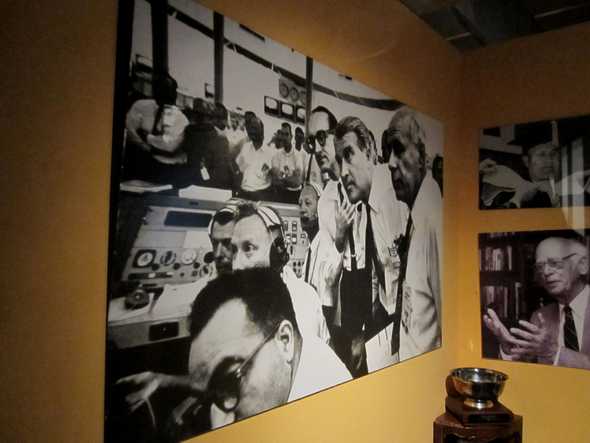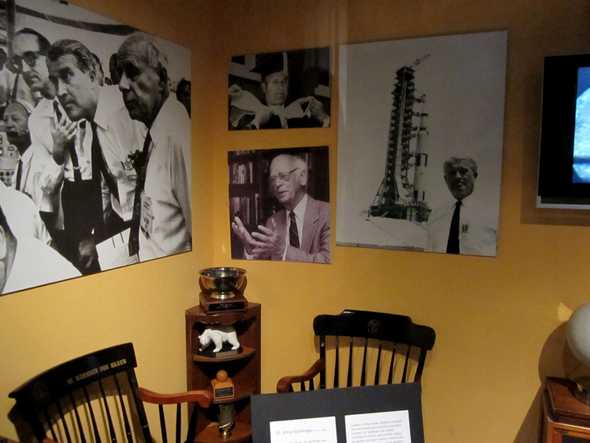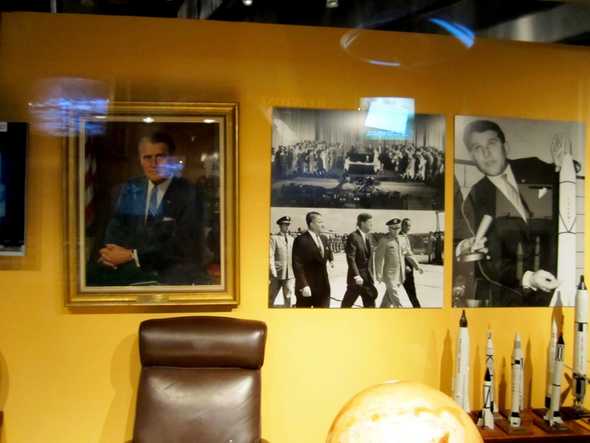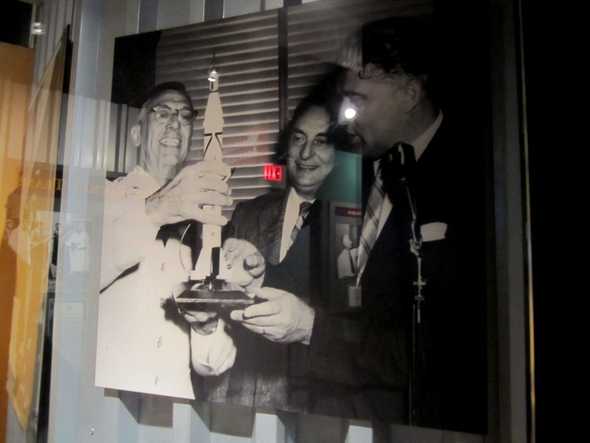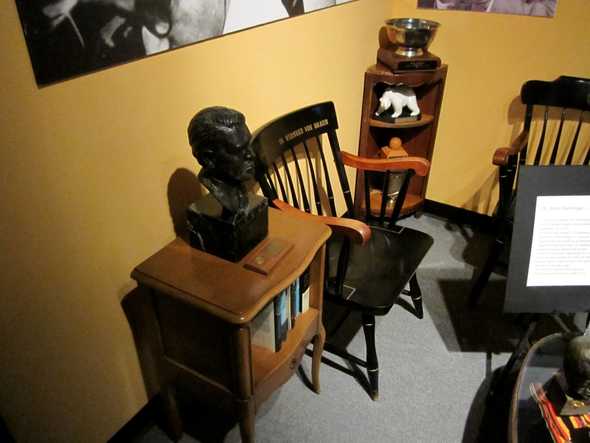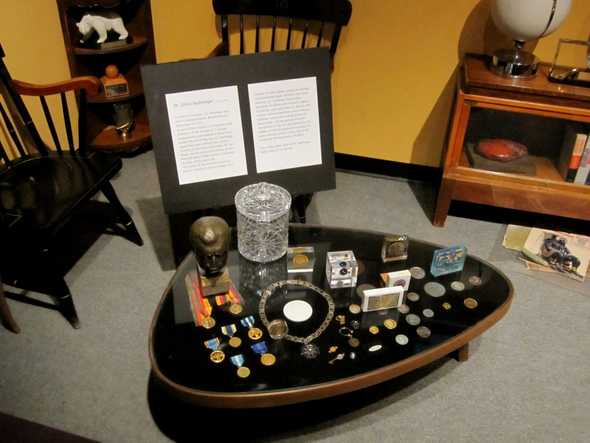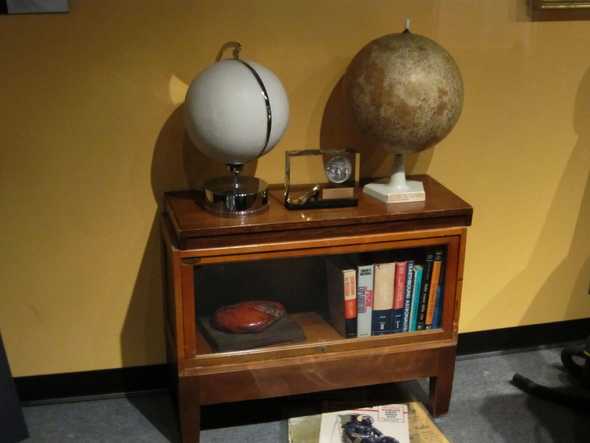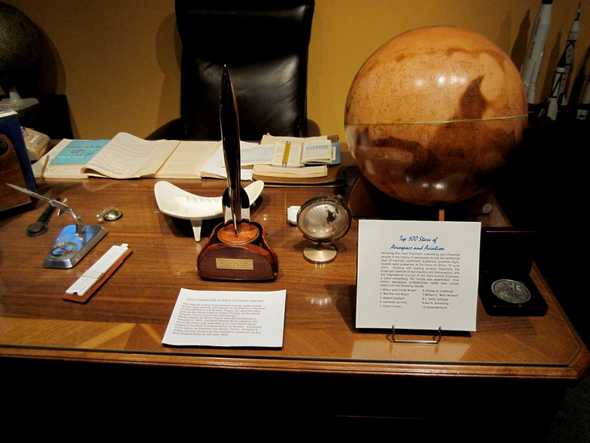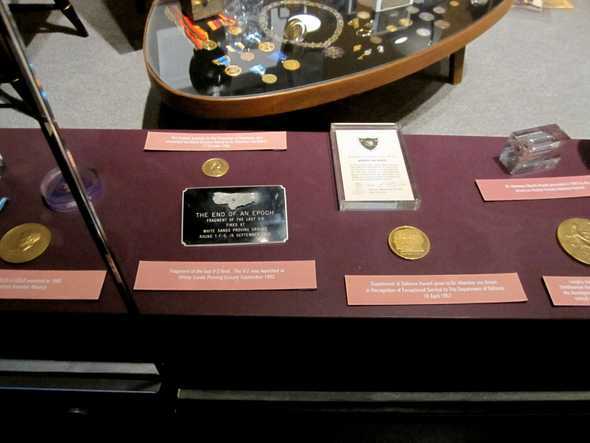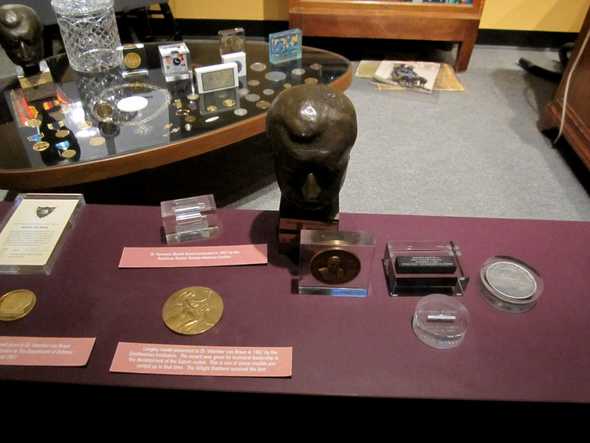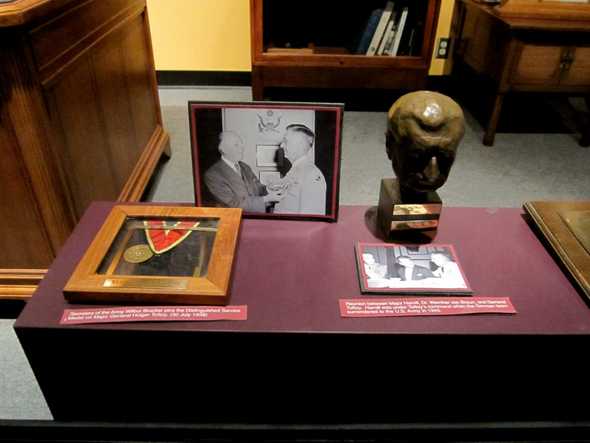Office of Wernher von Braun
At the U.S. Space and Rocket Center in Huntsville, Alabama features the desk and items from German-born rocket scientist and former director of the Marshall Space Flight Center, Wernher von Braun.
Major General Holger N. Toftoy (1902 - 1967)General Toftoy graduated from West Point in 1926. During World War ll, he became Chief Of the Army Ordnance Technical Intelligence teams in Europe. He was to seek out and evaluate captured enemy ordnance weapons and support equipment. The teams were asked to make a full report on two of the most spectacular German weapons of the war: V-1 and V-2 rockets. The V-2 was developed by a group of scientists under the direction of Dr. Wernher von Braun at Peenemunde located on the Baltic. Contact was made with the Germans in May 1945. Toftoy knew the U.S. Army was planning to add guided missiles to its weapons program. He recommended to Washington the Germans scientists be brought to the U.S. for interrogation and possible employment.
By September 1945, the first group of scientists, including von Braun, arrived in the U.S. The team went to Fort Bliss, Texas, at first, then to Huntsville, Alabama in 1950. In 1952 Toftoy was assigned to the Redstone Arsenal as Director of the Ordnance Missile Laboratories, responsible for planning, technical control and supervision of what had become the nationwide Army guided missile and development program.
During Toftoy’s command (1952 - 1958), Redstone Arsenal was responsible for the research and development, procurement and production, storage, maintenance and issue of the entire Army family of missiles: NIKE AJAX, NIKE HERCULES, HAWK, LACROSSE, HONEST JOHN, LITTLEJOHN, CORORAL, REDSTONE, SERGEANT, PERSHING, NIKE ZEUS, JUPITER, JUPITER c.
In 1958 he was named Commanding General of Aberdeen Proving Ground, MD. Toftoy retired from the Army in 1960.
Dr. Ernst Stuhlinger (1913 - 2008)A native of Germany, Dr. Stuhlinger was born in Niederrimbach, Wuerttemberg, December 19, i913. As one of the original 1l8 engineers and scientists of the German V-2 missile program who surrendered to Americans toward the end of the war, Dr. Stuhlinger played the quiet, behind-the-scenes scientist to the more charismatic Dr. von Braun. He was director of science at the Marshall Space Flight Center in the early decades of the space age. The author of the definitive book on electric propulsion and co-author of a number of other books related to manned and unmanned space activities and space sciences, Dr. Stuhlinger has written hundreds of articles and scientific papers on nuclear and space physics, electric and nuclear rocket propulsion, space vehicles, satellites, astronomy and the future of space flight. He has gained scientific recognition in the U.S. and abroad for his studies of electric propulsion systems for space vehicles and his active role in the furthering the exploration of space.
This coffee table, built by Dr. Stuhlinger, holds many of his awards.
Hugo Award For Science Fiction & FantasyThe Science Fiction Achievement Awards, better known as the Hugo Awards, are awards for excellence in the field of science fiction and fantasy. Hugos are awarded each year by the World Science Fiction Society, at the World Science Fiction Convention (Worldcon). Works eligible for Retro Hugos were first published or released in 1953. The Best Related Book category, for which this Hugo was awarded, is for non-fiction works related to the field of science fiction or fantasy. Conquest of the Moon, by Wernher von Braun, Fred L. Whipple & Willey Ley was chosen by the members’ nominees as the Best Related Book for the year 1953.
Top 100 Stars of Aerospace and AviationHonoring the most important interesting and influential people in the history of aerospace during the centennial year of manned, controlled, sustained, powered flight, awards were presented at the Pans Air Show, 18 June 2003. Working with leading aviation historians; the American Institute of Aeronautics and Astronautics; and the International Council of the Aeronautical Sciences, a ballot comprising 762 names was assembled. One million aerospace professionals made their voices heard with the following results:
- Wilbur and Orville Wright
- Wemher von Braun
- Robert Goddard
- Leonardo da Vinci
- Glenn Curtiss
- Charles A. Lindbergh
- William L. “Billy” Mitchell
- L. “Kelly” Johnson
- Neil A. Armstrong
- Daniel Bernoulli

